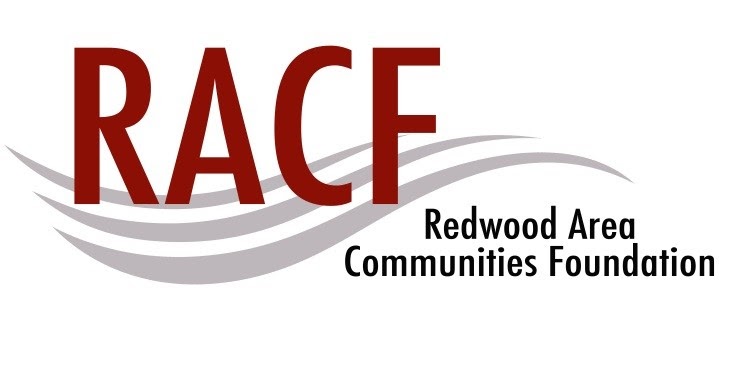Minnesota Valley Regional Rail Authority
RADC is the administrator for the Minnesota Valley Regional Rail Authority. For questions, contact McKenzie Taylor - programs@radc.org
Full Steam Ahead: MVRRA Marks 1,000 Cars in a Month and a Future on the Rise
The Minnesota Valley Regional Rail Authority (MVRRA) is proving what determination, persistence, and vision can accomplish. For the first time in the Minnesota Prairie Line’s history, more than 1,000 railcars were shipped in a single month this July, a huge milestone that underscores the incredible momentum building across the region. This follows on the heels of last year’s total of over 9,200 cars, a number that many once thought would never be possible, and it stands as proof that the long fight to preserve and rebuild this railroad has been worth it.
That fight began decades ago. The tracks that make up today’s Minnesota Prairie Line were first laid in the 1880s, connecting small towns and farmers across the Minnesota River Valley. After years of changing ownership, the line was abandoned in 1982 by the Chicago and North Western Railway. Refusing to let rail disappear from their communities, the counties of Carver, Sibley, Renville, Redwood, and Yellow Medicine formed MVRRA as a joint powers agreement, united by the belief that rail mattered to the future of rural Minnesota. Early efforts to restart operations struggled, and by 2000 the line once again sat abandoned, its century-old rails and bridges deteriorating mile by mile.
The turning point came in 2002, when the Twin Cities and Western Railroad stepped in through its subsidiary, Minnesota Prairie Line (MPLI). After months of rehabilitation, the first revenue train rolled that October, though at the time trains could only crawl along at 5 to 10 miles per hour. Since then, MVRRA leaders, shippers, and local advocates have worked tirelessly to bring the line back to life. Piece by piece, mile by mile, upgrades have been made, and today nearly half of the corridor has been rebuilt with continuous welded rail, stretching all the way to Fairfax.
Leaders like Gene Short, a Redwood County Commissioner, refused to let the dream die. Short pushed for bonding funds as far back as 2007–2009 with then-legislator Marty Seifert. Along with the steadfast leadership of MVRRA board members, and the determination of staff working with MnDOT and FEMA disaster grants, the foundation was set for recovery. As Julie Rath, previous MVRRA Administrator, reflected, “With the hard work and determination of the board, Bob Fox as the Chair, and our true grit working with MnDOT and FEMA disaster grants, MVRRA has persevered in spite of self-doubt from many. And the belief of the shippers who continually make investments in their own facilities to stay viable for their patrons and farmers makes a huge statement.” What was once described as impossible has now become a vital economic driver for an entire region.
Leadership has always been at the heart of MVRRA’s success. For nearly twenty years, Board Chair Bob Fox, Renville County Commissioner, and Administrator Julie Rath, along with many other board members, worked side by side to secure funding, manage projects, and keep the vision alive. Today, that torch has been passed to Steve Saxton, Sibley County Commissioner and current Board Chair, and Administrator McKenzie Taylor, who are committed to carrying forward the same spirit of collaboration and persistence that has defined the Authority since its earliest days.
Just as important has been the role of Twin Cities & Western Railroad (TC&W), the parent company of Minnesota Prairie Line. TC&W has been a steady partner since operations restarted in 2002, bringing professional expertise, reliable service, and a shared commitment to making the line thrive. Their continued investment and day-to-day management of train operations have been invaluable in helping MVRRA deliver on its promise to shippers and communities.
Thanks to this persistence from local leaders, committed staff, and strong partners like TC&W, the results are now impossible to overlook. Agricultural freight is the backbone of the line, moving grain, fertilizer, and ag inputs that are vital to the region’s economy. Farmers, cooperatives, and agribusinesses rely on the service and they’re investing in growth because of it. Meadowland Farmers’ Cooperative recently built a 26,000-ton fertilizer plant in Echo, with rail access as a key factor in its location. Step Saver, a long-time shipper in Morton, is expanding operations into Fairfax, another sign that businesses along the line are putting down deeper roots because of dependable rail service. More carloads shipped also means fewer semis on rural highways, easing the burden on roads, increasing safety, and reducing costs for taxpayers.
This summer also brought a celebration of heritage when the North American Railcar Operators Association (NARCOA) visited with their historic motorcars. Their trip not only drew attention to the line’s history but also generated donations for the Fairfax and Belview depots, preserving two important landmarks.
The momentum is undeniable, but challenges remain. Half of the line still operates with infrastructure that is more than 100 years old, and upgrading the remaining stretches is critical to meeting growing demand. The MVRRA is currently managing progress with the help of four major funding sources: a CRISI federal grant for planning and preliminary design on the rest of the line, an IIJA grant to cover the local match for CRISI, a Minnesota Rail Service Improvement (MRSI) grant which funded major bridge improvement projects over the Minnesota River and Sulfur Lake completed last summer, and a $2 million state cash appropriation now being used to upgrade additional bridges. These investments have been vital, but to keep this momentum alive and growing, more support is urgently needed. Each tie replaced, each mile upgraded, and each bridge reinforced is not just an improvement to a railroad, it’s an investment in the agricultural economy of southwestern Minnesota. Every shipper that expands along the line creates jobs and drives growth. Every carload shipped takes trucks off rural highways, making communities safer. The record-breaking 1,000 cars shipped in a single month is proof of what’s possible when persistence meets opportunity.
MVRRA has shown what it means to serve communities along the line, to deliver for farmers, for businesses, and for the towns that depend on rail. With continued support from the state legislature and partners across Minnesota, the momentum will not only continue, it will accelerate. The railroad is no longer a question mark of “if.” It is a story of “when” — and the answer is happening right now.
Posted: Feb 04, 2022
BR&E -- Business Retention and Expansion Program ( U of M)
Category: Business Resources
Posted: Feb 04, 2022
Redwood County Labor Profile
Category: Redwood County Labor Profile. Site Selector Resources
Posted: Feb 04, 2022
Redwood County Agriculture Profile
Category: Ag and Renewable Energy, Site Selector Resources
Posted: Feb 04, 2022
Redwood County Statistical Data Profile
Category: CEO Roundtable, Site Selector Resources
Posted: Feb 13, 2019
Rural Prosperity: Rural America can make our country great again.
Category: Broadband, Infrastructure
Posted: Dec 21, 2015
Community Vibrancy and the Greater Redwood Falls Area
Category: Blandin Foundation; Redwood County
Posted: Aug 14, 2015
Redwood County/Redwood Falls Retail Trade Analysis - 2013
Category: Site Selector Resources
Posted: Mar 03, 2014
The Rural Minnesota Community & Economic Development Resource Guide
Category: Business Resource
Posted: Jan 30, 2014
Planning for Students' Successful Transition to Postsecondary Education and Employment
Category: Education
Posted: Jan 15, 2014
White Paper Analysis of Utility-Managed, On-Site Energy Storage in Minnesota
Category: Renewable Energy
Posted: Jan 15, 2014
The Value of Solar Heating and Cooling (SHC) in Minnesota
Category: Renewable Energy
Posted: Sep 17, 2013
Why Minnesota: Southwest
Category: Economic Development, Site Selector Resources
Posted: May 09, 2013
U of M Extension -- Community Leadership and Engagement
Category: Business Resource
Posted: Feb 17, 2013
DSIRE - Database of State Incentives for Renewables & Efficiency
Category: Renewable Energy, Energy Efficiencies Funding programs
Posted: Feb 17, 2013
Minnesota's Renewable Energy Roundtable Portal
Category: Renewable Energy, Minnesota Agriculture Resources
Posted: Feb 17, 2013
MN Dept of Commerce: Office of Energy Security
Category: Renewable Energy, Minnesota Agriculture Resources
Posted: Feb 17, 2013
New Funding Opportunities in the Fields of Energy and Environment
Category: Renewable Energy, Minnesota Agriculture Resources
Posted: Feb 16, 2013
Doing Buisness in Minnesota (DEED)
Category: Business Resources, Start a Business












.jpg)


